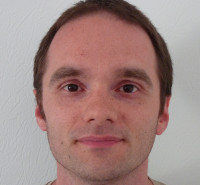Big Data
Economics & Global Development
Decision-making, Bias & Fairness
Behavioral Economics & Decision Sciences
Econometric Models & Mathematics
Post-Doctoral Fellowships
Netherlands
2015.08.31
Combining Risk Assessments for Optimal Group Decisions
Answering these questions about which decision procedures produce the optimal collective conclusion is one goal of the project. But, of course, there is unlikely to be a one-size-fits-all solution. The best method of aggregating risk assessments will depend on various factors regarding the problem at hand (the threshold agreed upon, the diversity of individuals’ views) and the purpose assigned (to be more or less cautious, represent the diversity of opinions or the middle of the road). “My objective,” Dr. Boyer-Kassem explains, “is to develop a sort of map, distinguishing among a dozen types of aggregation problems and identifying the best method to arrive at a collective decision in each scenario.”
Dr. Boyer-Kassem will develop these conclusions by investigating existing logical and mathematical models of judgment aggregation that might be applicable to the risk aggregation problem, modifying them as necessary and potentially developing new ones. By mapping out the landscape of risk assessment in group decisions his results should be easily applicable to a variety of collectives. These might be expert panels, research groups, citizens’ associations… – any group of people in need of rational methods to arrive, together, at the best evaluation of the risks before them and the optimal decision that follows.
Scientific title: Collective Decisions: How To Aggregate Risk Assessment and Risk Acceptability
To add or modify information on this page, please contact us at the following address: community.research@axa.com

Thomas
BOYER-KASSEM
Institution
Tilburg University
Country
Netherlands
Nationality
French
Related articles
Finance, Investment & Risk Management
Pandemics & Infectious Diseases
Economics & Global Development
Covid-19
Financial Markets, Modelling & Pricing
Economic Loss & Disaster Risk Financing
Insurance & Risk Management
AXA Award
France
2020.08.31
An Extreme Value Model For the Analysis of the COVID-19 Pandemic and Its Impact, and the Mitigation of Future Related Crises
The second strand of work will harness the vast wealth of functional data at our disposal to construct estimators for... Read more

Gilles
STUPFLER

